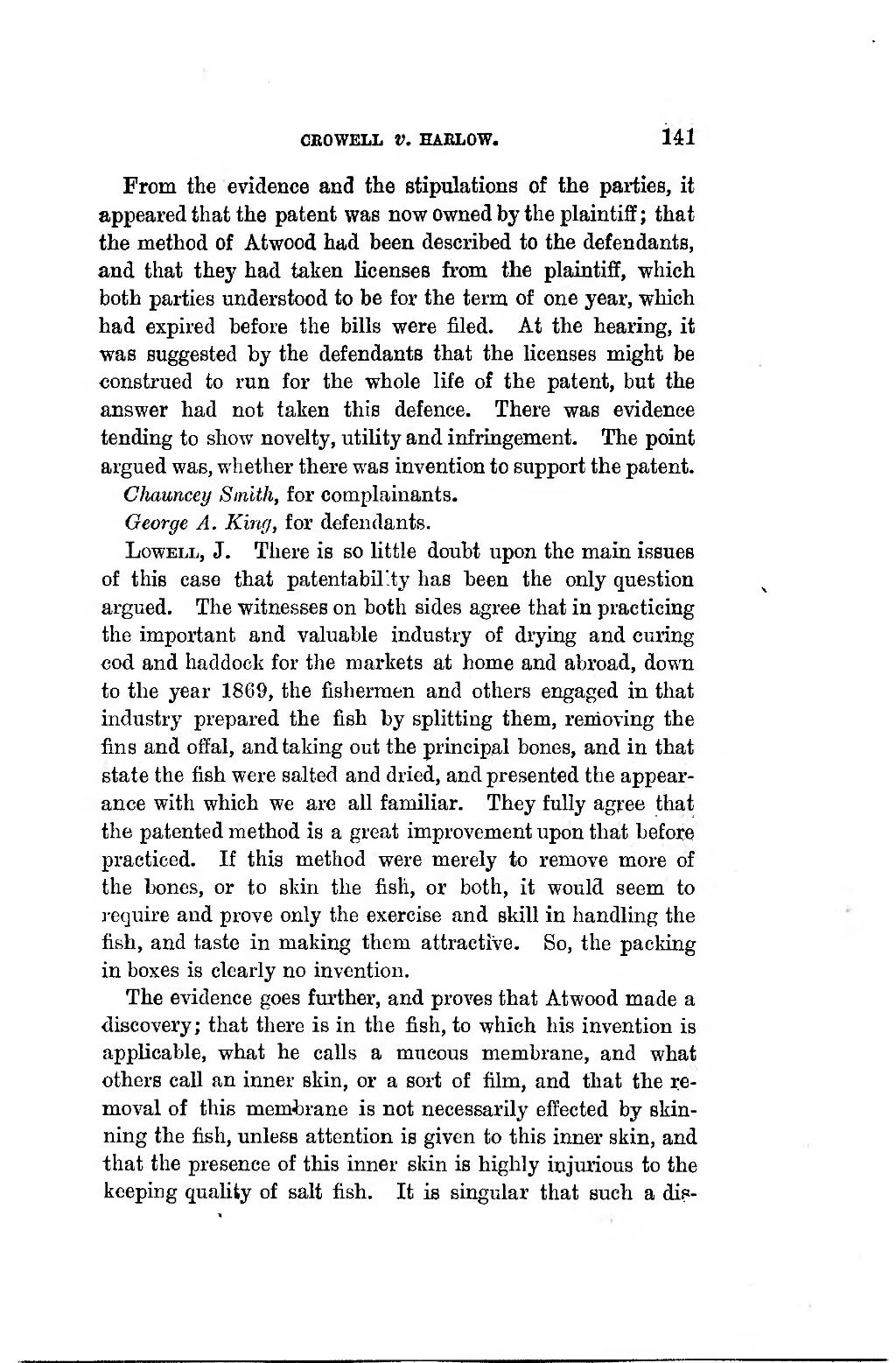CEOWELL V. HARLOW. 141 �From the evidence and the stipulations of the parties, it appeared that the patent was now owned by the plaintiff ; that the method of Atwood had been described to the defendants, and that they had taken licenses from the plaintiff, which both parties understood to be for the term of one year, -which had expired before the bills were filed. At the hearing, it was suggested by the defendants that the licenses might be construed to run for the whole life of the patent, but the answer had not taken this defence. There was evidence tending to show novelty, utility and infringement. The point argued was, whether there was invention to support the patent. �Chauncey Smith, for complainants. �George A. King, for defendants. �LowELL, J. There is so little doubt upon the main issues of this case that patentabil'iy has been the only question argued. The witnesses on both sides agree that in practicing the important and valuable industry of drying and curing cod and haddock for the markets at home and abroad, down to the year 1869, the fishermen and others engaged in that industry prepared the iish by splitting them, renioving the fins and otïal, and taking ont the principal bones, and in that state the iish were salted and dried, and presented the appear- ance with which we are ail familiar. They fuUy agree that the patented method is a great improvement upon that before praeticed. If this method were merely to remove more of the bones, or to skin the fish, or both, it would seem to i-equire and prove only the exercise and skill in handling the fish, and taste in making them attractive. So, the packing in boxes is clearly no invention. �The evidence goes further, and proves that Atwood made a discovery; that there is in the fish, to which his invention is applicable, what he calls a mucous membrane, and what others call an inner skin, or a sort of film, and that the re- moval of this memt)rane is not necessarily effected by skin- ning the fish, unless attention is given to this inner skin, and that the presence of this inner skin is highly injurions to the keeping quality of sait fish. It is singular that such a dis- ��� �
Page:Federal Reporter, 1st Series, Volume 1.djvu/149
This page needs to be proofread.
